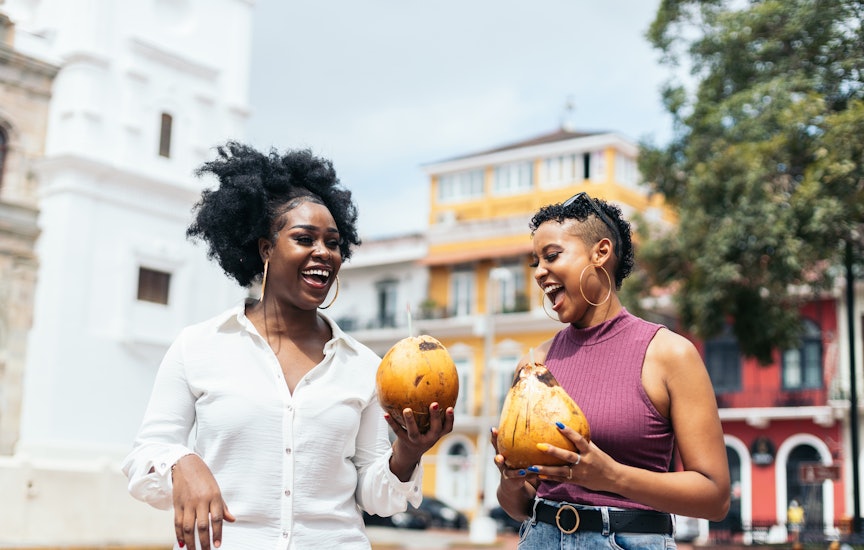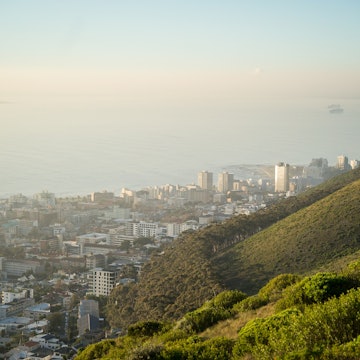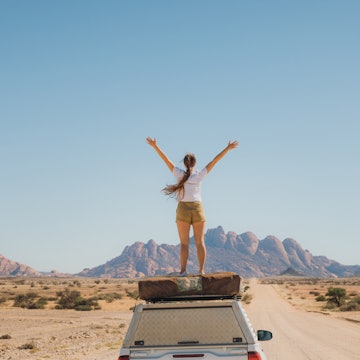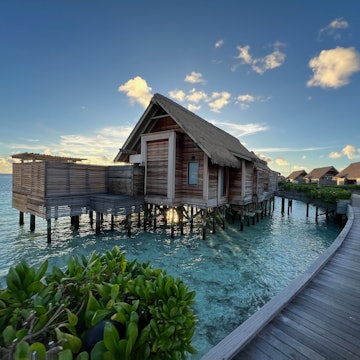
How to get around in Botswana, from 4WD safaris to canoe tours



Children love going on safari in Botswana © Mint Images Limited / Alamy Stock Photo
Botswana is famed for its enormous expanses of pristine wilderness that have been given over to fence-free national parks and private game reserves, allowing its abundant wildlife to roam free. But what’s the best way to explore the country?
Public transport will only get you so far. To get to lodges or campsites in national parks, game reserves, and private concessions you’ll have to self-drive; be driven in a 4WD; or hop on a light aircraft.
Here's what you need to know about getting around Botswana.

A mobile safari will get you up close to wild nature
If you long to be surrounded by the rustle and hum of the wilderness but don’t like the idea of driving yourself, then a mobile safari can’t be beaten.
Join a small group 4WD tour, and you’ll set up camp in different bush locations, eat under the stars and leave no footprint. They all include a driver-guide and cook, entrance and camping fees, meals and activities. The final price tag depends on the bells and whistles (and there’s no limit to luxury in Botswana).
If you’re happy being hands-on, a participation safari is a budget-friendly option – you’ll pitch in to prepare meals, wash the dishes and help to dismantle and set up camp. Bring a sleeping bag and you’ll share your two-person tent, the bush toilet and bucket shower. You'll also spend less time at each campsite and more time on the road.
Upgrade to a fully serviced mobile safari, and everything is done for you. Your walk-in tent comes with camp beds and an ensuite bathroom, a bonus when you’re not allowed to leave your tent until daylight. With two or three nights at each campsite, you have more time to sit back and savor your surroundings, and it’s still a fraction of the price you’d pay to stay at an upscale lodge.
For larger, more wallet-friendly tours, hop on an overland truck and stay at a mix of campsites and lodges. If you’re low on budget and/or time, you can always book a half- or full-day game drive from Kasane or Maun.

Self-driving can be a great way to explore
On a self-drive safari, you can move at your own pace through Botswana’s vast and varied landscapes. It’s the ultimate wilderness adventure and not one for the fainthearted – or the unprepared. You need to be confident behind the wheel of a 4WD, up for getting off the grid, and ready for close wildlife encounters.
A 4WD camper comes equipped with folding rooftop tents and fully fitted kitchens. Wild camping is illegal, but if you pay a bit more, rental companies such as Drive Botswana will tailor your itinerary, handle campsite reservations and get national park permits sorted for you.
If you decide to drive independently, plan your route (campsites and park permits need to be booked in advance, especially from June to September); let a trusted contact know where you’re going; and download an offline map such as Tracks4Africa.
Even if you’re using a local SIM card, a phone signal isn’t guaranteed, so consider renting a satellite phone for emergencies. Make sure you’re equipped with spare tires, a jack, sand ladders and a tow rope, and that you know how to stay safe in a sticky situation.
You can stock up on supplies of drinking water, food and fuel in major towns, such as Kasane for Chobe National Park and Savuti and Maun for Moremi Game Reserve.
Let the plane take the strain
Distances in Botswana are huge, and often the only way to reach the most far-flung lodges and camps is to take a charter flight on the nine- and 12-seater Cessnas that ferry passengers around like bush taxis.
These flights are usually organized by tour companies. You’ll thump down in the middle of nowhere, where wildlife wanders across the runway and the arrivals terminal is a wooden bench under a shady tree.
Air Botswana operates the scheduled network with direct flights from Maun to Kasane (for Chobe National Park and Victoria Falls), Gaborone, and Johannesburg in neighboring South Africa.

Get a different view of wildlife from the water
For a hippo's-eye view of the Okavango Delta’s shimmering waterways, a trip in a mokoro (a traditional dugout canoe, now often made of fiberglass rather than wood) is a must. As you skim across the water, the only sounds are the splash of the pole and the swish of reeds. Metallic blue malachite kingfishers flit by, and majestic fish eagles circle overhead.
Another highlight is a boat safari on the Chobe River, especially at sunset when the water turns to liquid gold. As you chug gently along, look out for elephants using their trunks like snorkels, herds of gruff-looking Cape buffalo and colossal Nile crocodiles basking on the banks with jaws agape.
Then there’s also the chance of exploring the upper Okavango Delta by houseboat. Houseboat trips only depart from the panhandle region (usually Shakawe) and are ideal for groups of friends and families. Plus, you can cram all the best activities from this region (birdwatching and visiting Tsodilo Hills) into a three-night stay. Play I spy for the plentiful hippos and enormous crocodiles, or try your hand at tiger fishing.

Saddle up for a low-carbon horseback safari
While some lodges are bringing in electric vehicles and boats – Chobe Game Lodge was among the first – for an even more environmentally friendly option, experienced horseback riders can canter through spectacular scenery. From arid desertscapes to delta wetlands, horses can go where 4WDs can’t, and without any jarring engine noise, getting you up close to long-lashed giraffes, dazzles of zebra and skittish wildebeest.
Try a multi-day adventure in the storied hills of the Tuli Block or saddle up for a short afternoon from Maun.
Use the bus to travel between towns and cities
Buses are a cheap way to get between major towns and cities in Botswana and a great way to meet the locals, but journeys can be long, noisy and uncomfortable, and they won’t get you anywhere remote.
Seabelo is a long-distance bus company with regular services from Kasane, Maun and Gaborone. It’s more likely to stick to the timetable, go faster and stop less than the combis (minibuses) that ply the same paved routes.
Accessible travel in Botswana
Travelers with limited mobility can request specially modified vehicles for transfers, game drives, river cruise boats and mokoros. Some come with hydraulic lifts, and wheelchairs can be locked to the floor. Travelers with hearing and vision impairments have options, too. Endeavour Safaris is a specialist in accessible safaris, and operators can recommend suitable accommodations.















